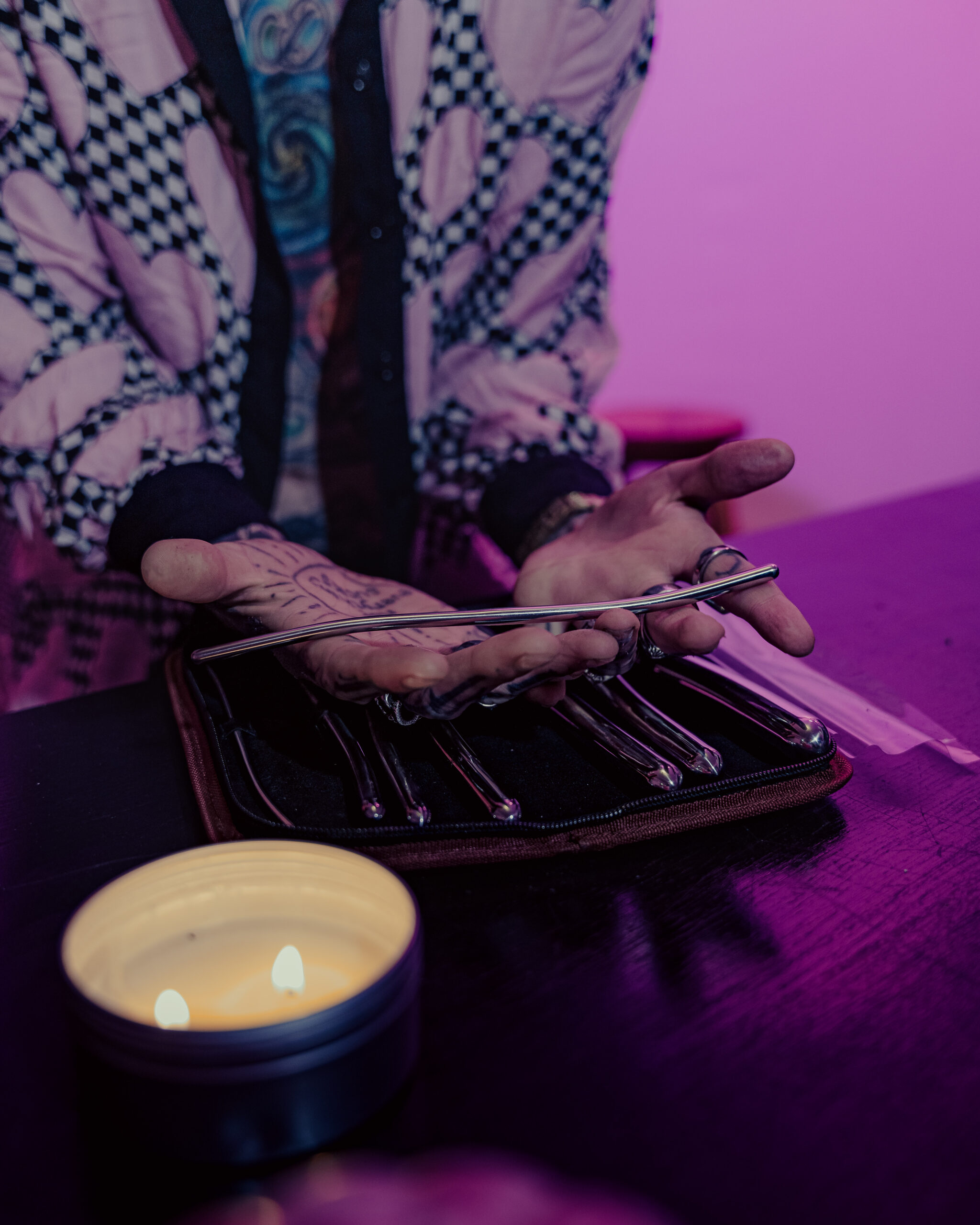Situationships

Modern dating is a complex landscape where clear definitions seem increasingly elusive. Enter the “situationship,” a relationship that exists in a hazy grey area, defying traditional labels like dating or being friends with benefits. This ambiguous state, characterized by undefined expectations and shifting boundaries, has become a dominant force in contemporary romance, leaving individuals navigating a world of emotional uncertainty.
Definition and Characteristics
A situationship is a romantic connection that lacks clear definition or commitment. It exists somewhere between casual dating and a committed relationship, leaving individuals uncertain about the nature and status of their bond.
Situationships are often characterized by inconsistent communication, undefined expectations, and fluctuating levels of intimacy.
While some situationships may evolve into committed relationships, others remain ambiguous indefinitely, leaving participants in a state of emotional limbo.

Prevalence in Modern Dating
The prevalence of situationships in modern dating can be attributed to several factors. The rise of social media and dating apps has created a culture of abundance, where individuals have access to a wide range of potential partners. This abundance can lead to a reluctance to commit to any one person, as individuals may fear missing out on other opportunities.
Furthermore, societal pressures surrounding traditional relationship norms have lessened in recent years. Younger generations are more open to exploring alternative relationship models that prioritize flexibility and autonomy.
The allure of a situationship lies in its perceived freedom and lack of commitment. Individuals may find it appealing as it allows them to experience intimacy and connection without the pressures of exclusivity or long-term expectations.
However, the ambiguity of situationships can also lead to emotional distress and insecurity. Uncertainty about the nature of the relationship can create anxiety, confusion, and feelings of being taken for granted.
Ambiguity in Language and its Role
Ambiguity is a fundamental aspect of language, playing a crucial role in shaping our understanding and communication. While clarity is often valued, the inherent openness in word meanings allows for multiple interpretations and shades of meaning. In English, this ambiguity manifests itself through various linguistic devices, such as figurative language, sarcasm, and slang, adding layers of complexity to discourse.
Euphemisms and Evasive Terms
Euphemisms and evasive terms are particularly potent tools for navigating sensitive topics or avoiding direct confrontation. They offer a veiled way of expressing potentially uncomfortable truths or desires, allowing individuals to maintain social decorum while still conveying their intended message. These terms often soften harsh realities, replacing blunt expressions with more palatable alternatives.
For instance, “passed away” is a euphemism for death, offering a gentler phrasing that avoids the starkness of the word itself. Similarly, “downsizing” is used to describe layoffs, masking the negative impact on individuals with a seemingly neutral term.
In the realm of modern dating, euphemisms and evasive language contribute to the ambiguity that characterizes situationships. Terms like “seeing where things go,” “keeping it casual,” or “just hanging out” obscure the true nature of the connection, allowing individuals to avoid explicit commitments while still engaging in intimate behaviors.
Fear of Commitment
Modern dating thrives on a carefully constructed veil of ambiguity, with situationships serving as its emblematic manifestation. This intentional blurring of lines stems from a confluence of factors, including the allure of freedom and the fear of commitment ingrained in contemporary society.
The language of situationships is itself riddled with ambiguity, employing euphemisms and evasive terms to mask true intentions. Phrases like “getting to know each other” or “taking things slow” serve as verbal smokescreens, allowing individuals to engage in intimacy without the weight of defining their relationship.
This linguistic dance allows for emotional detachment, providing a shield against vulnerability. Individuals can explore the pleasures of connection without fully investing emotionally, avoiding the potential pain of rejection or heartbreak.
However, this reliance on ambiguity comes at a cost. The lack of clear expectations and defined boundaries creates a breeding ground for insecurity and emotional turmoil. Participants in situationships are often left guessing about the other person’s intentions, leading to anxiety and a sense of being emotionally adrift.
Benefits of Ambiguity for Individuals
Ambiguity in language allows for multiple interpretations and shades of meaning, adding complexity and nuance to communication. This inherent openness can be both beneficial and challenging, particularly in the context of modern dating.
For individuals, ambiguity can offer a sense of flexibility and freedom, allowing them to explore connections without feeling pressured to commit. The uncertainty inherent in situationships can provide a safe space for emotional exploration, fostering a sense of autonomy and control.
Ambiguous language can also serve as a shield against vulnerability, protecting individuals from potential emotional pain associated with clear commitments. By avoiding definitive labels or expectations, people can engage in intimacy without fully investing emotionally.
Psychological Factors Contributing to Situationships
The modern dating landscape is characterized by a proliferation of “situationships,” relationships that exist in a nebulous space between casual encounters and committed partnerships. This ambiguity stems from a complex interplay of psychological factors, influenced by societal shifts, individual anxieties, and the pervasive influence of technology.
Desire for Validation and Attention
Situationships thrive on a desire for validation and attention, often stemming from deeper-rooted psychological needs.
- Low Self-Esteem: Individuals with low self-esteem may seek constant reassurance and validation through multiple connections. The ambiguity of a situationship allows them to feel desired without committing to a relationship that might expose vulnerabilities or potential for rejection.
- Fear of Commitment: Some individuals may fear the emotional intensity and responsibility associated with committed relationships. Situationships offer a way to experience intimacy and connection without the pressure of exclusivity or long-term obligations.
- Need for Control: The fluid nature of situationships can provide a sense of control over emotions and boundaries. Individuals can dictate the level of involvement and maintain emotional distance when needed, reducing feelings of vulnerability.
- Validation Seeking: Social media plays a significant role in fueling this desire for validation. The constant stream of curated content and highlight reels can lead individuals to compare themselves to others and seek external affirmation through attention and likes.
Avoidance of Emotional Intimacy
Situationships thrive on a desire for validation and attention, often stemming from deeper-rooted psychological needs.
- Low Self-Esteem: Individuals with low self-esteem may seek constant reassurance and validation through multiple connections. The ambiguity of a situationship allows them to feel desired without committing to a relationship that might expose vulnerabilities or potential for rejection.
- Fear of Commitment: Some individuals may fear the emotional intensity and responsibility associated with committed relationships. Situationships offer a way to experience intimacy and connection without the pressure of exclusivity or long-term obligations.
- Need for Control: The fluid nature of situationships can provide a sense of control over emotions and boundaries. Individuals can dictate the level of involvement and maintain emotional distance when needed, reducing feelings of vulnerability.
- Validation Seeking: Social media plays a significant role in fueling this desire for validation. The constant stream of curated content and highlight reels can lead individuals to compare themselves to others and seek external affirmation through attention and likes.
Lack of Clear Expectations
Situationships thrive on a delicate balance of emotional connection and ambiguity, fueled by various psychological factors. Individuals may be drawn to this dynamic due to anxieties surrounding commitment, low self-esteem, or a desire for control within relationships.
The allure of situationships often lies in their perceived freedom and lack of pressure. They provide a space where individuals can explore intimacy without the weight of defining expectations or labels. This sense of autonomy can be particularly appealing to those who value flexibility and independence.
However, this ambiguity can also lead to emotional distress and insecurity. The lack of clear communication and defined boundaries creates uncertainty about the nature of the connection, leaving individuals feeling vulnerable and emotionally adrift.
Furthermore, situationships can perpetuate a cycle of emotional dependence, where individuals seek validation and attention through fleeting connections rather than investing in deeper, more meaningful relationships.

Societal Influences on Situationships
Modern dating has evolved into a landscape where traditional relationship structures seem increasingly outdated. The rise of the “situationship,” a relationship defined by ambiguity and undefined expectations, reflects this shift towards emotional fluidity. Societal changes, from evolving gender roles to the impact of technology, have contributed to a culture where clear labels and commitments are often perceived as restrictive. This societal influence has fostered an environment where individuals are more willing to embrace the complexities and uncertainties of situationships, prioritizing flexibility and personal autonomy over traditional relationship norms.
Changing Gender Roles
Modern dating has evolved into a landscape where traditional relationship structures seem increasingly outdated. The rise of the “situationship,” a relationship defined by ambiguity and undefined expectations, reflects this shift towards emotional fluidity. Societal changes, from evolving gender roles to the impact of technology, have contributed to a culture where clear labels and commitments are often perceived as restrictive. This societal influence has fostered an environment where individuals are more willing to embrace the complexities and uncertainties of situationships, prioritizing flexibility and personal autonomy over traditional relationship norms.
One significant factor influencing the prevalence of situationships is the changing landscape of gender roles. Traditionally, men were expected to initiate relationships and take on a leadership role, while women were seen as passive recipients of romantic attention. However, contemporary society is witnessing a shift towards more egalitarian partnerships where both individuals are encouraged to pursue their desires and define their own relationship expectations.
This blurring of gender roles has contributed to a greater acceptance of non-traditional relationship models, such as situationships, which allow for flexibility and shared agency in navigating intimacy and commitment.
Furthermore, technology has significantly impacted dating dynamics. The rise of social media and dating apps has created a culture of abundance, where individuals have access to a vast pool of potential partners. This can lead to a reluctance to commit to any one person, as individuals may fear missing out on other opportunities.
Technology also facilitates casual connections and fleeting interactions, making it easier for people to engage in situationships without the pressure of building a long-term commitment. The ease with which individuals can connect and disconnect online reinforces the transient nature of modern relationships.
Technology’s Impact on Relationships
Modern dating has evolved into a landscape where traditional relationship structures seem increasingly outdated. The rise of the “situationship,” a relationship defined by ambiguity and undefined expectations, reflects this shift towards emotional fluidity. Societal changes, from evolving gender roles to the impact of technology, have contributed to a culture where clear labels and commitments are often perceived as restrictive. This societal influence has fostered an environment where individuals are more willing to embrace the complexities and uncertainties of situationships, prioritizing flexibility and personal autonomy over traditional relationship norms.
One significant factor influencing the prevalence of situationships is the changing landscape of gender roles. Traditionally, men were expected to initiate relationships and take on a leadership role, while women were seen as passive recipients of romantic attention. However, contemporary society is witnessing a shift towards more egalitarian partnerships where both individuals are encouraged to pursue their desires and define their own relationship expectations.
This blurring of gender roles has contributed to a greater acceptance of non-traditional relationship models, such as situationships, which allow for flexibility and shared agency in navigating intimacy and commitment.
Furthermore, technology has significantly impacted dating dynamics. The rise of social media and dating apps has created a culture of abundance, where individuals have access to a vast pool of potential partners. This can lead to a reluctance to commit to any one person, as individuals may fear missing out on other opportunities.
Technology also facilitates casual connections and fleeting interactions, making it easier for people to engage in situationships without the pressure of building a long-term commitment. The ease with which individuals can connect and disconnect online reinforces the transient nature of modern relationships.
Consequences of Situationships
Modern dating has become increasingly complex, characterized by a growing prevalence of “situationships” – relationships that exist in a blurry zone between casual dating and committed partnerships. These ambiguous connections thrive on undefined expectations, leaving individuals navigating a landscape of emotional uncertainty.
Emotional Distress
Situationships are often emotionally taxing due to their inherent lack of clarity. The ambiguity surrounding the nature of the relationship can lead to feelings of insecurity, anxiety, and confusion. Individuals may constantly second-guess the other person’s intentions or worry about being led on.
The absence of clear communication about expectations can also contribute to emotional distress. Without a defined understanding of what the relationship entails, individuals may feel uncertain about their role, boundaries, and commitment level. This lack of clarity can create resentment, hurt feelings, and a sense of emotional vulnerability.
Furthermore, situationships often leave individuals feeling emotionally neglected or taken for granted. Since there is no formal commitment, partners may not prioritize each other’s emotional needs as they would in a committed relationship. This can lead to feelings of loneliness, rejection, and a lack of emotional support.
Uncertainty and Instability
Situationships, with their ambiguous nature and undefined expectations, present a unique set of challenges for individuals involved. The uncertainty surrounding the relationship’s status can breed insecurity, anxiety, and confusion. Individuals may constantly question the other person’s intentions, leading to feelings of doubt and emotional distress.
The lack of clear communication about boundaries and commitment levels creates an environment where individuals feel emotionally vulnerable. They may fear being led on or taken advantage of, leaving them feeling hurt and disrespected. The absence of a formal definition can also lead to resentment if one partner invests more emotionally than the other, creating an imbalance in the relationship.
Beyond individual emotional well-being, situationships can hinder personal growth and development. The lack of commitment prevents individuals from exploring deeper levels of intimacy and emotional connection, limiting their capacity for vulnerability and authentic self-expression.
Furthermore, situationships can perpetuate a cycle of unhealthy attachment patterns. Individuals who repeatedly engage in these ambiguous relationships may struggle to form secure and fulfilling connections in the future. Their fear of commitment and emotional vulnerability can hinder their ability to establish healthy boundaries and expectations in committed partnerships.
Alternatives to Situationships
Modern dating is a complex landscape where traditional relationship norms are increasingly being challenged. Enter the “situationship,” a relationship style characterized by ambiguity and undefined expectations, which has become increasingly prevalent in contemporary romance.
Open Communication and Defined Boundaries
Alternatives to situationships abound, offering individuals a chance to build healthier and more fulfilling relationships. Open communication is paramount; clearly defining expectations, boundaries, and desired outcomes minimizes misunderstandings and fosters emotional security.
Defined boundaries are equally crucial. Establishing clear parameters around time commitment, physical intimacy, and emotional availability prevents feelings of confusion and resentment. Honest conversations about exclusivity or non-exclusivity ensure both partners are on the same page regarding the nature of their connection.
Considering a traditional dating approach, where individuals commit to getting to know each other with the intention of building a long-term relationship, can provide stability and emotional security. This involves prioritizing open communication, vulnerability, and shared experiences that foster genuine connection. Another alternative is exploring friendships with benefits, which offer intimacy without the pressure of romantic commitment.
However, it’s important to establish clear boundaries and expectations within this framework to avoid misunderstandings and ensure mutual respect.
Ultimately, the most fulfilling approach lies in choosing relationship styles that align with individual values and desires. Embracing honesty, open communication, and defined boundaries empowers individuals to cultivate meaningful connections while prioritizing their emotional well-being.
Dating Apps with Relationship Goals Filters
For those seeking alternatives to the ambiguity of situationships, modern dating offers several options:
Dating Apps with Relationship Goals Filters: Many dating apps now offer features allowing users to specify their relationship goals, from casual dating to finding a life partner. This feature helps narrow down matches based on shared intentions, minimizing the chances of misaligned expectations.
Traditional Dating: Embracing a more traditional approach involves actively seeking out individuals with whom you share common values and interests. This could involve joining clubs, attending social events, or engaging in activities that align with your passions.
Friends With Benefits (FWB): For those seeking intimacy without the commitment of a romantic relationship, Friends With Benefits offers a structured alternative to situationships. Clearly defining boundaries and expectations upfront is crucial for maintaining mutual respect and preventing emotional complications.
Open Communication: Regardless of the chosen path, prioritizing open communication is essential in any relationship dynamic. Clearly expressing your desires, needs, and boundaries fosters transparency and minimizes misunderstandings, creating a more fulfilling experience for all parties involved.
Buy condoms with added features for a natural feel
Shop for assorted condoms for your convenience
Buy ultra-thin for natural and secure intimacy
Order stimulating warming products for a thrilling ride
Find novelty flavoured and coloured condoms for ultimate sensation
Find natural and regular products for your everyday routine
Get Control Condoms for longer-lasting pleasure
Find Safe and Strong for lasting reliability
- Who Should Not Get Fillers? - November 10, 2025
- What Is Relationship Anarchy And How Does It Challenge Monogamous Ideals? - November 7, 2025
- Weed Drinks & Weed Infused Beverages - November 6, 2025

